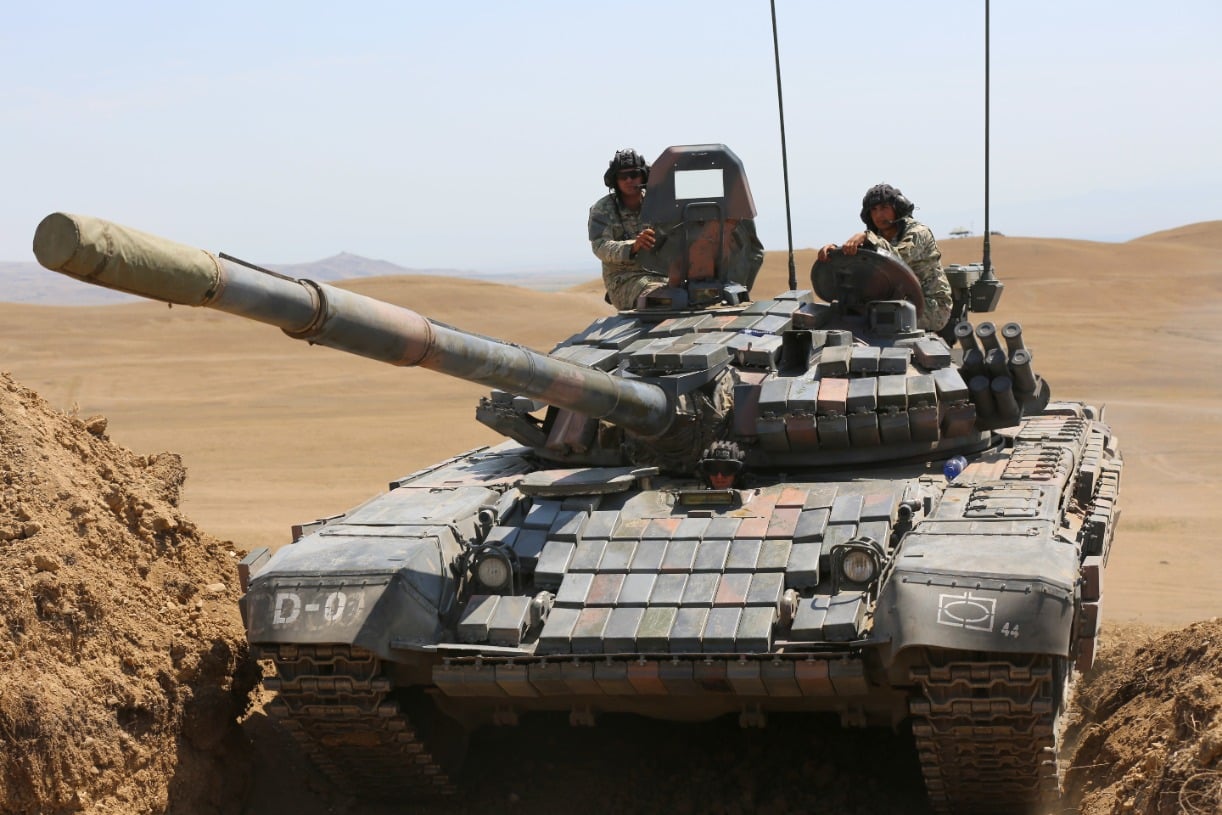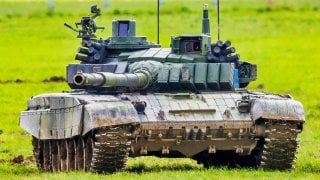Russia's T-72 Is the 'Death Sentence' Tank
Russia’s T-72 tank, widely deployed in Ukraine, faces a critical design flaw that leaves it vulnerable to modern anti-tank systems. Built in the 1960s, the T-72’s automated loading system exposes ammunition, turning the tank into a dangerous powder keg.
Summary and Key Points: Russia’s T-72 tank, widely deployed in Ukraine, faces a critical design flaw that leaves it vulnerable to modern anti-tank systems. Built in the 1960s, the T-72’s automated loading system exposes ammunition, turning the tank into a dangerous powder keg.
-Newer anti-tank munitions like the Javelin and drones such as Switchblade 300 and 600 exploit the T-72’s weak top armor, resulting in catastrophic turret explosions.
-Despite efforts to counter these threats with improvised armor modifications, Russian T-72s remain easy targets, contributing to the loss of over 3,500 tanks, a significant portion being T-72s. The aging design poses immense risks to crews.
T-72 Tanks in Ukraine: Can Russia’s Aging Armor Survive Modern Warfare?
The T-72 is Russia’s most-used tank in Ukraine. The Russian military has deployed thousands of T-72 main battle tanks during the invasion. Ukrainian forces deploy it as well.
But the T-72 has a major flaw in its design that makes it easy prey for modern anti-tank systems and drones.
The T-72 in Ukraine and its Fatal Flaw
Designed in the 1960s, the T-72 is one of the most popular tanks in history, with over 25,000 vehicles manufactured. The tank packs a 125 mm smoothbore main gun and a V12 diesel engine that can propel the armored vehicle at speeds of almost 50 miles per hour to ranges of about 300 miles.
Perhaps the most significant flaw of the T-72 has to do with the tank’s design. Much like any other Russian main battle tank, the T-72 has a crew of three men (commander, gunner, and driver) instead of the four-man crew used by the majority of Western tanks.
This T-72’s design replaces the loader of the main gun with an automated loading system. This change can lead to faster reloading times, but it is a source of constant danger. For this automated loading system to operate effectively, it needs to have easy access to the tank’s ammunition storage. This presents evident dangers. With their main gun rounds unprotected, Russian tanks are essentially powder kegs. It only takes one spark to ignite the whole thing and propel the turret hundreds of feet in the air, as we have repeatedly seen in Ukraine.
Moreover, newer munitions like the AGM-148 Javelin anti-tank missile or suicide drones like the Switchblade 300 and 600 target a tank’s top armor instead of its front or side defenses, which are always thicker. As a result, the T-72’s primary defenses are bypassed, with catastrophic results for the crew inside.

To counter this, the Russian military has tried some creative methods, such as building coop cages around a tank’s turret or even welding an entire “turtle shell of armor” on top of the tank’s superstructure to create a buffer zone between the crew and incoming munitions from above. However, such measures have only limited effectiveness, and they have downsides of their own: The tank becomes slower and harder to use in urban settings and dense foliage.
The tank’s aging armor and the development of newer and more effective anti-tank munitions have been the bane of the T-72 in Ukraine. The Russian military has lost thousands of T-72s damaged or destroyed in the fighting. Although specific and current numbers on Russia’s tank casualties are elusive, a safe estimate hovers over 3,500, with a good portion of that number being T-72s.
Overall, the T-72 is a capable tank that allows a military to bolster its numbers, but its fatal flaws can easily turn an assignment to a T-72 into a death sentence.
About the Author:
Stavros Atlamazoglou is a seasoned defense journalist specializing in special operations and a Hellenic Army veteran (national service with the 575th Marine Battalion and Army HQ). He holds a BA from the Johns Hopkins University and an MA from the Johns Hopkins’ School of Advanced International Studies (SAIS). His work has been featured in Business Insider, Sandboxx, and SOFREP.
Image Credit: Creative Commons.


